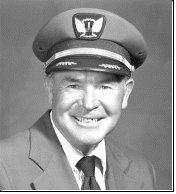About the Airport
Heber City acquired land for an airport in 1946 and in 1947, local residents formed the Heber Valley Flying Service, Inc., on the property, with Russell McDonald as chief flight instructor, head mechanic, and general manager. Most of the company’s customers were World War II veterans learning to fly on the GI Bill.
The first major improvement to the airport came in 1949, when Heber City received money from the Federal Aviation Funding (then the Civil Aeronautics Authority) program. The runway was extended to 4,400 feet and paved. The taxiway, access road, and aircraft parking areas were also paved. These improvements officially placed the airport in the federal National Plan of Integrated Airport Systems (NPIAS).
In January 1952, Heber City acquired the airport hangar. The Heber Valley Flying Service ceased operations but activity at the airport continued with private airplanes and gliders. In 1956, the airport once again had a full-time fixed-base operation (FBO). The current FBO on the field is OK3 AIR.
Gliders and sailplanes have been at the airport since 1955; Soar Utah has been a full-time summer operation since 1991.
The most recent improvement done to the airport was in 2015, in order to update the runway pavement. The airport can now accommodate most corporate jet aircraft. Today there are 54 hangars and over 100 planes on the field.

